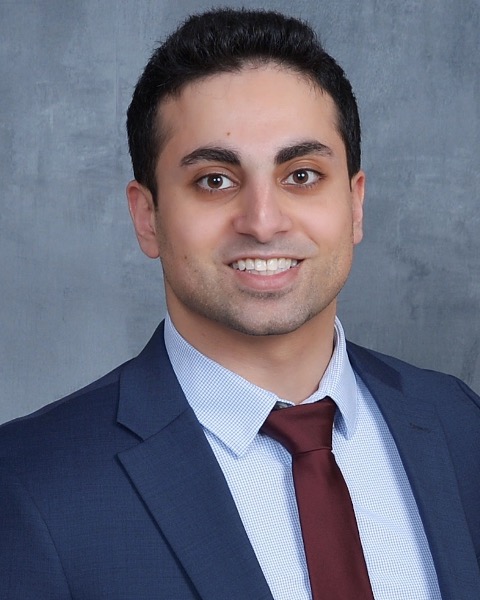Abstract Session
Rapid Fire Research Forum
(AS2) What Is the Amount of Coronal Correction Required in Adult Spinal Deformity Patients to Achieve Optimal Outcomes in Patients with Ideal Sagittal Alignment Post-operatively?
Monday, April 24, 2023
7:25am - 7:30am PST
Location: Los Angeles Convention Center, 406AB

Jamshaid M. Mir, MD
Research Fellow
NYU Langone Medical Center
Paterson, NJ, US
Presenting Author(s)
Disclosure(s):
Peter G. Passias, MD: Cerapedics: Consultant (Ongoing); Globus Medical: Consultant (Ongoing); Journal of Neurosurgery: Spine: Board Member/Officer/Trustee (Ongoing); Medtronic: Consultant (Ongoing); Nuvasive: Consultant (Ongoing); Royal Biologics: Consultant (Ongoing); Spine: Board Member/Officer/Trustee (Ongoing); Terumo: Consultant (Ongoing)
Introduction: Adult spinal deformity surgery has been shown as an effective treatment for correcting malalignment, however, the degree of coronal correction needed in the case of a suitable sagittal alignment is still unclear.
Methods: Operative ASD patients with a two-year SVA classified as “0” according to SRS-Schwab criteria were included. SCoronal deformity patients were ranked into 4 quartiles by C7PL, with 1st being the lowest coronal deformity. Conditional inference tree analysis (CIT) was used to develop threshold cutoffs for target coronal alignment in C7PL or degree of correction from BL to 2Y. Logistic regression analysis confirmed results of CIT.
Results: 180 ASD patients met inclusion criteria. Stratified into quartiles by SVA to C7PL deformity, 45 patients (Q1) were considered pure coronal deformity, with a mean SVA .7cm ± 2.3cm and mean coronal 4.3cm ± 3.3cm and 95 patients were considered pure sagittal deformity with a mean SVA 7.9cm ± 6.8cm and mean coronal 1.1cm ± 1.1cm. In patients with a pure coronal deformity, patients with a 1Y coronal alignment of less than 3.4cm were less likely to develop PJK by 1Y (OR: .24, 95% CI: .095, p=.003) with a significant relationship between degree of correction in SF-36 PCS (r=.320) and SRS-22 Pain (r=.240, both p< 0.05). There were no significant associations with 1Y Cobb angle. When analyzing Q2, Q3, and Q4 (patients with an increasing sagittal deformity) there were no significant relationships with post-operative C7PL and development of PJK, PJF, or HRQL measures.
Conclusion : Among patients who reached ideal sagittal by 1 year, when stratifying by degree of coronal malalignment severity, results show patients with a pure coronal deformity have a significant benefit from coronal correction. With increasing sagittal deformity, coronal realignment has a lower impact on outcomes. Coronal plumbline has a stronger connection with outcomes than Cobb angle.
Methods: Operative ASD patients with a two-year SVA classified as “0” according to SRS-Schwab criteria were included. SCoronal deformity patients were ranked into 4 quartiles by C7PL, with 1st being the lowest coronal deformity. Conditional inference tree analysis (CIT) was used to develop threshold cutoffs for target coronal alignment in C7PL or degree of correction from BL to 2Y. Logistic regression analysis confirmed results of CIT.
Results: 180 ASD patients met inclusion criteria. Stratified into quartiles by SVA to C7PL deformity, 45 patients (Q1) were considered pure coronal deformity, with a mean SVA .7cm ± 2.3cm and mean coronal 4.3cm ± 3.3cm and 95 patients were considered pure sagittal deformity with a mean SVA 7.9cm ± 6.8cm and mean coronal 1.1cm ± 1.1cm. In patients with a pure coronal deformity, patients with a 1Y coronal alignment of less than 3.4cm were less likely to develop PJK by 1Y (OR: .24, 95% CI: .095, p=.003) with a significant relationship between degree of correction in SF-36 PCS (r=.320) and SRS-22 Pain (r=.240, both p< 0.05). There were no significant associations with 1Y Cobb angle. When analyzing Q2, Q3, and Q4 (patients with an increasing sagittal deformity) there were no significant relationships with post-operative C7PL and development of PJK, PJF, or HRQL measures.
Conclusion : Among patients who reached ideal sagittal by 1 year, when stratifying by degree of coronal malalignment severity, results show patients with a pure coronal deformity have a significant benefit from coronal correction. With increasing sagittal deformity, coronal realignment has a lower impact on outcomes. Coronal plumbline has a stronger connection with outcomes than Cobb angle.
